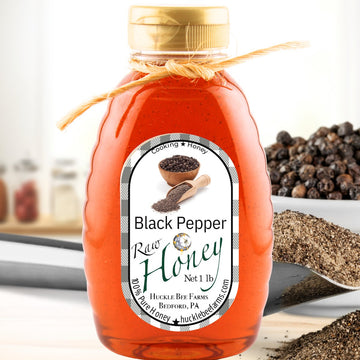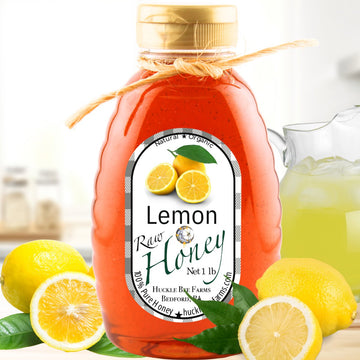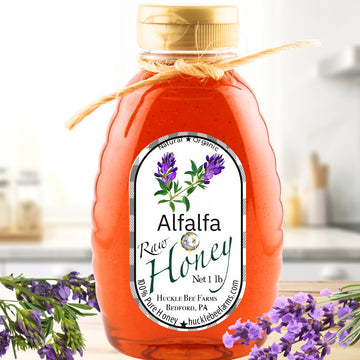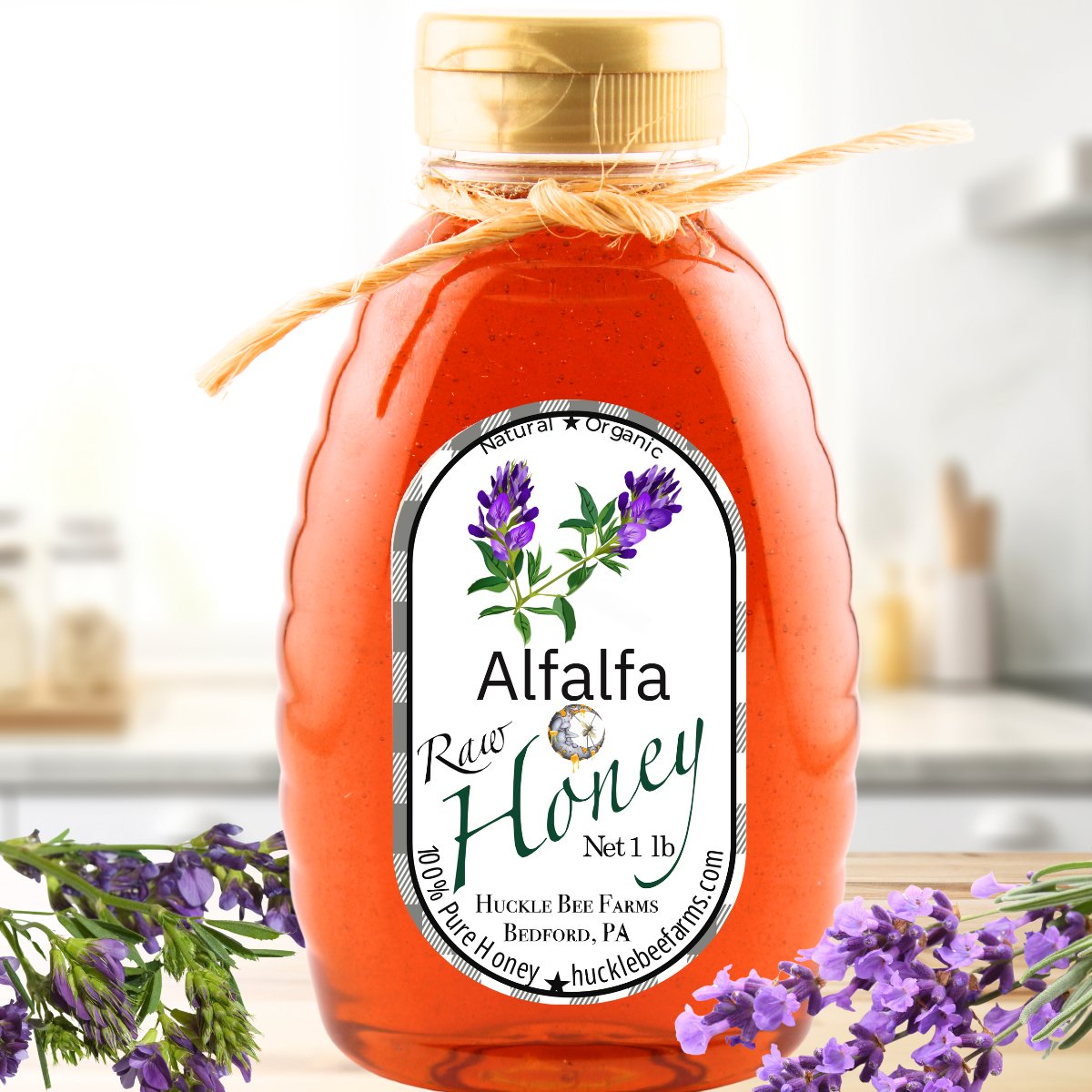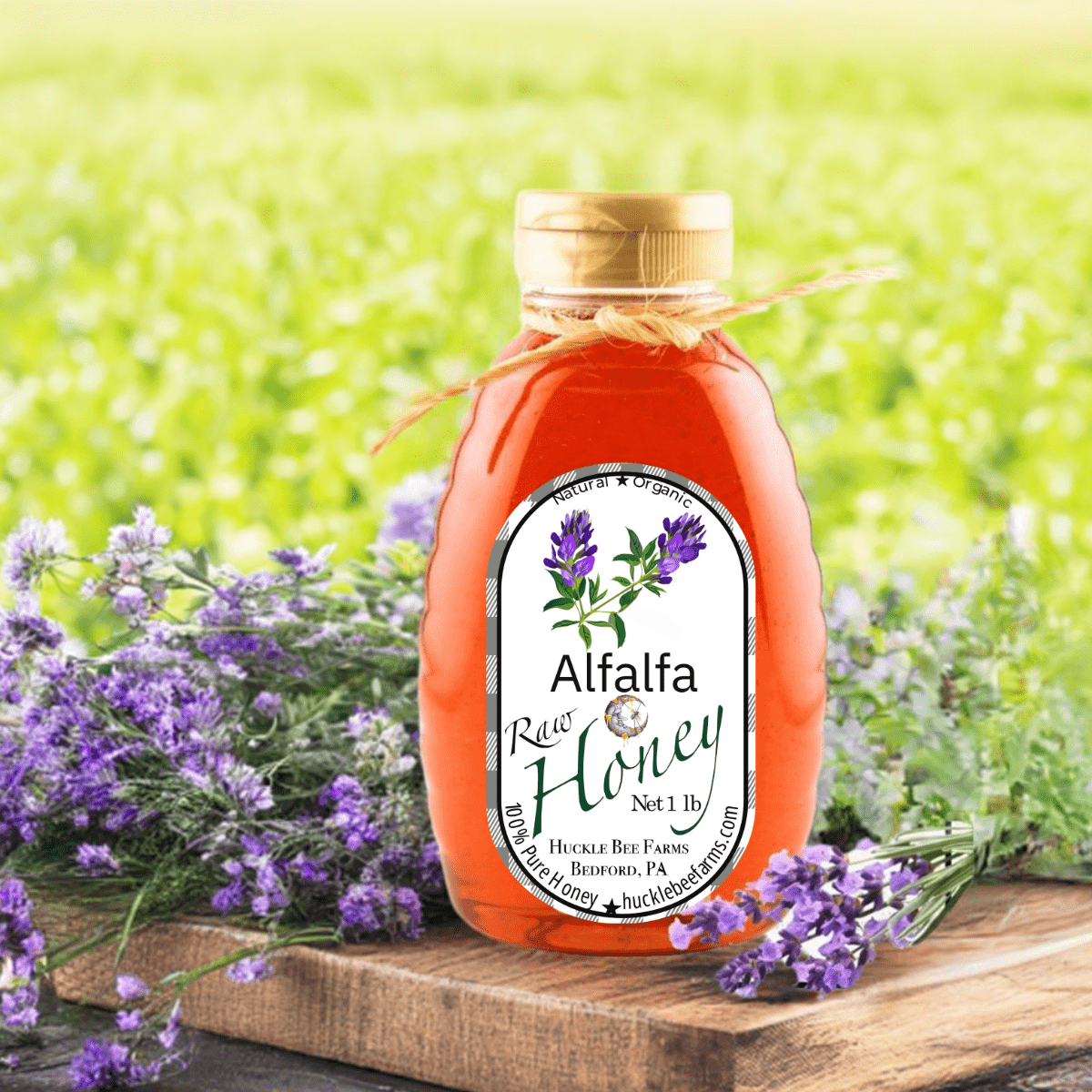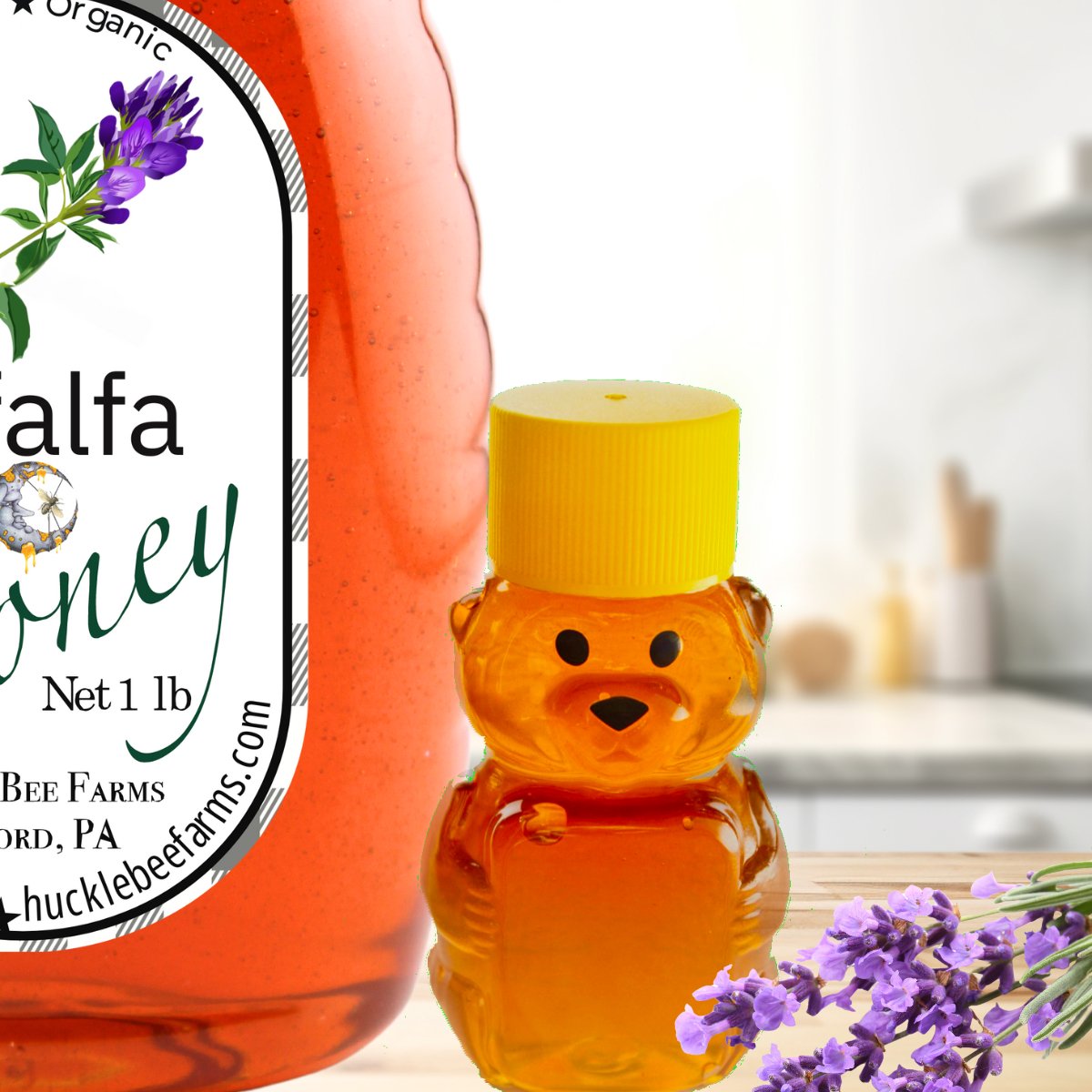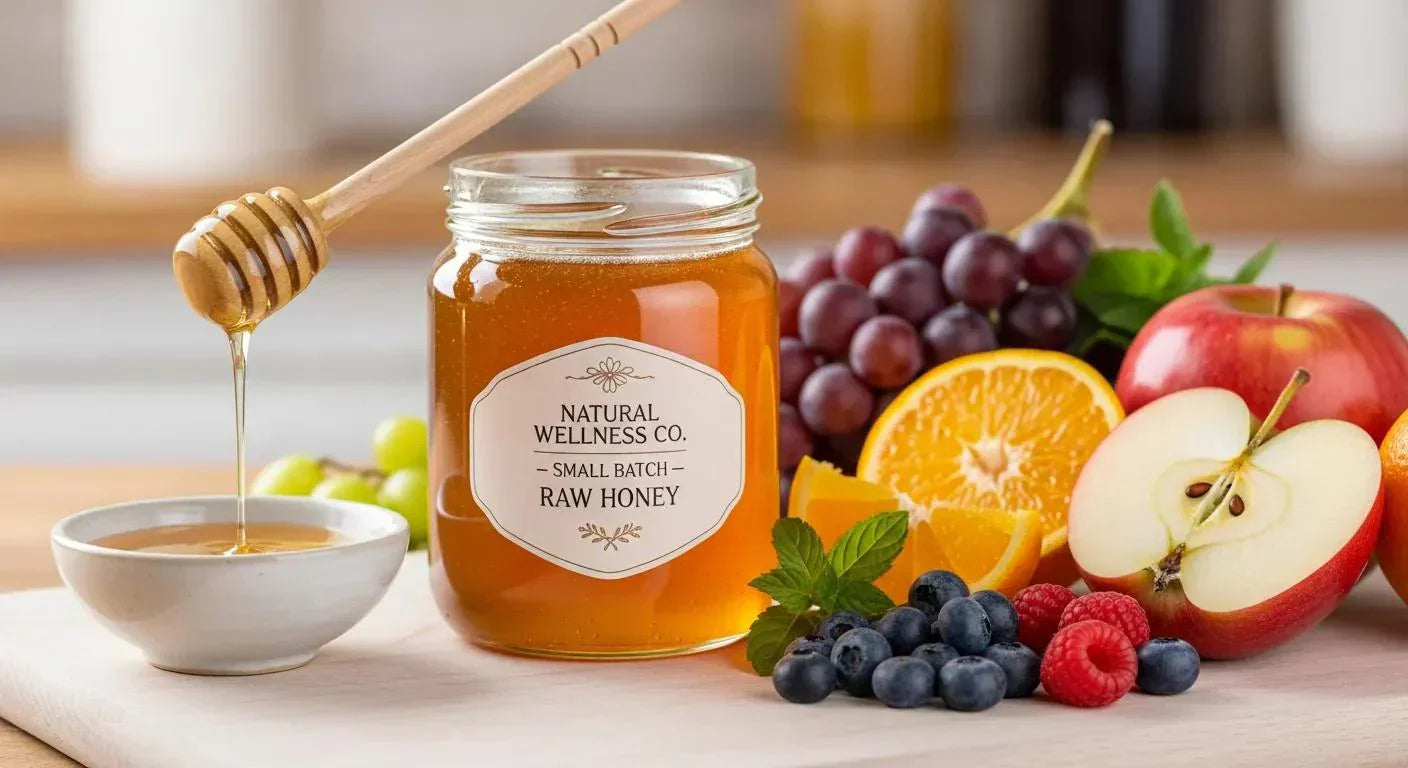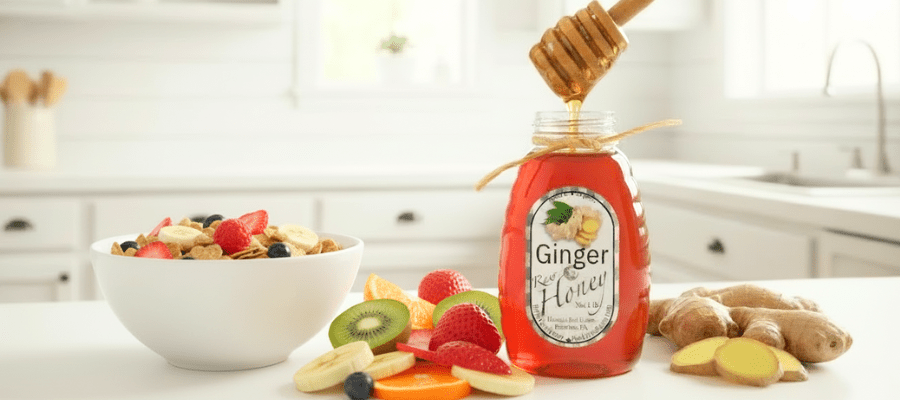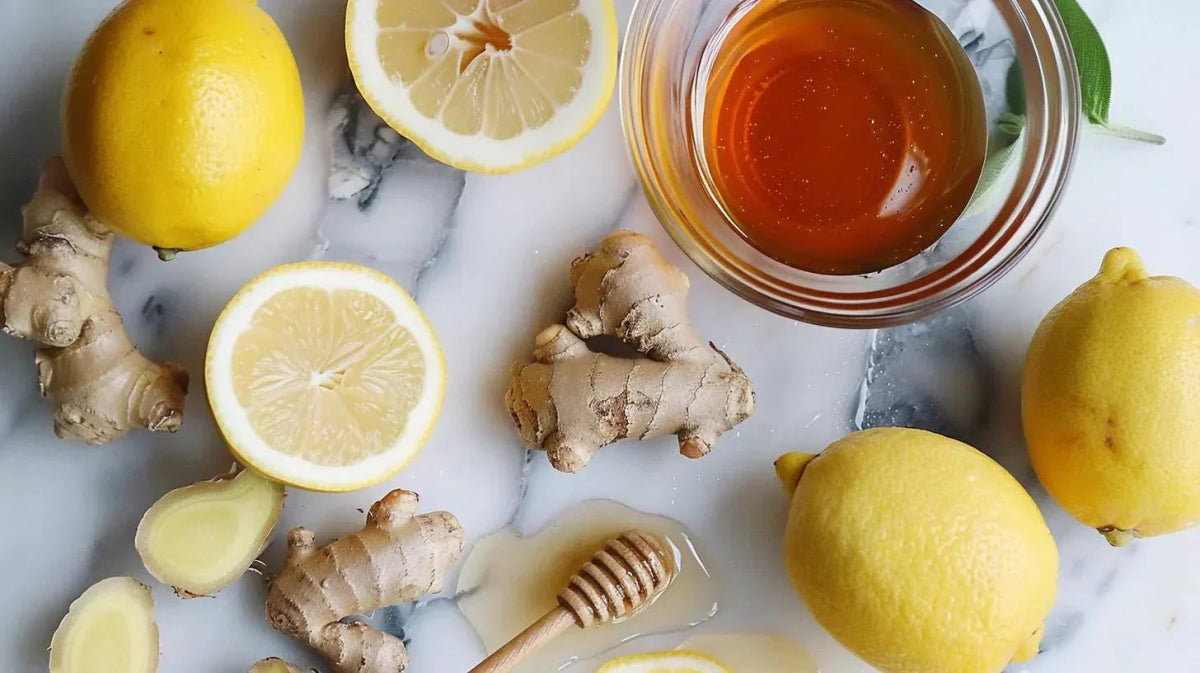
Cinnamon Honey: Natural Health Benefits for Wellness
Table of contents
Cinnamon honey is a simple mixture of ground or infused cinnamon with raw or specialty honey that many cultures use as a culinary ingredient and traditional remedy for immune support, metabolic balance, and topical healing. This guide explains what cinnamon honey is, why its combined bioactives matter, and how current research and practical use‐cases support everyday wellness. Readers will learn evidence-informed benefits (immunity, heart health, blood sugar support, metabolism, and antioxidant action), clear how‐to guidance for safe daily use, and targeted recipes for internal and topical applications. The article also maps biochemical mechanisms—how cinnamaldehyde and honey polyphenols interact—offers selection criteria for Ceylon vs Cassia and raw vs Manuka honey, and outlines safety, contraindications, and dosing frameworks. Along the way you'll find comparison tables, practical lists, and step-by-step recipes designed for immediate use and informed experimentation. Editorial note for content editors: Create a seo friendly keywords and long phrase blog article about "Cinnamon Honey: A Natural Remedy for Better Health"
What Are the Key Health Benefits of Cinnamon Honey?
Cinnamon honey combines two functional-food ingredients whose bioactive compounds contribute to immune defense, metabolic regulation, cardiovascular support, antioxidant protection, and topical wound healing. The mixture leverages cinnamaldehyde and related polyphenols from cinnamon alongside honey's phenolics, hydrogen peroxide activity, and, in specific honeys, methylglyoxal, producing complementary mechanisms that translate into measurable outcomes. Below is a concise summary of the top benefits followed by focused explanations of each pathway and illustrative evidence. Understanding these benefits helps readers decide how to use cinnamon honey as a supportive, not curative, element in a broader health plan.
Cinnamon honey offers five primary benefits:
- Immune support: Antimicrobial compounds in honey plus immune-modulating cinnamaldehyde enhance resistance to common pathogens.
- Blood sugar regulation: Cinnamon's insulin-sensitizing actions can help moderate post-meal glycemic responses when combined with lower-glycemic honey alternatives.
- Cardiovascular effects: Improvements in lipid markers and reduced vascular inflammation have been observed in studies of cinnamon and honey components.
- Antioxidant & anti-inflammatory protection: Polyphenols and flavonoids in both ingredients scavenge free radicals and lower inflammatory markers.
- Topical healing: Honey's wound-healing and antimicrobial properties, supported by cinnamon's anti-inflammatory effects, can accelerate minor skin repair.
These benefits derive from distinct active molecules and pathways, mapped below in a table that clarifies which ingredient contributes which effect.
Cinnamon and honey compounds mapped to mechanisms:
| Ingredient | Active compound / attribute | Primary effect |
|---|---|---|
| Cinnamon (Cinnamomum verum/Cassia) | Cinnamaldehyde, polyphenols | Anti-inflammatory, insulin-sensitizing |
| Honey (raw floral) | Phenolic antioxidants, hydrogen peroxide activity | Antimicrobial, antioxidant, wound healing |
| Manuka honey | Methylglyoxal (MGO) | Potent non-peroxide antimicrobial activity |
| Combined | Polyphenol synergy | Enhanced radical scavenging and complementary antimicrobial effects |
This mapping shows how each component contributes to targeted outcomes and why pairing them can multiply effects rather than merely add them. The next subsections expand on immunity, heart health, glycemic support, metabolism, and antioxidant action.
How Does Cinnamon Honey Boost Immunity Naturally?

Cinnamon honey boosts immunity by pairing honey's antimicrobial agents—such as hydrogen peroxide activity and diverse floral phenolics—with cinnamon's cinnamaldehyde and polyphenols that modulate immune signaling. This combination creates an environment that reduces microbial load topically and supports immune cell function internally, which can shorten symptomatic periods for mild infections. Recent studies through 2024–2025 highlight honey's efficacy as a cough suppressant and topical antimicrobial, while cinnamon extracts show cytokine-modulating properties in controlled models. For practical use, a daily spoonful or warm tonic can provide sustained exposure to these compounds; however, clear clinical recommendations vary and individuals should monitor responses.
Research indicates that combinations of honey and cinnamon can exhibit significant antibacterial interactions, with their combined action being contingent upon various factors like honey type and cinnamon species.
"Antibacterial Activity of Honey and Cinnamon Combinations"
Cinnamon exhibits antibacterial properties by disrupting cell membranes, inhibiting quorum sensing, blocking ATPase activity, and interfering with membrane porins. Consequently, combinations of honey and cinnamon demonstrate significant interactions, including synergistic, additive, and antagonistic effects, arising from the interplay of their diverse constituents. The nature of their combined action is contingent upon factors such as honey type, cinnamon species, and the form of cinnamon extract. Therefore, both honey and cinnamon are promising candidates for the development of novel antimicrobial agents.
Antibacterial activity of honey in combination with cinnamon, SS Dalugodage, 2022
The immune benefits lead naturally into cardiovascular implications, since reduced systemic inflammation from these compounds also supports vascular health, which is the next area of focus.
In What Ways Does Cinnamon Honey Support Heart Health?
Cinnamon honey supports heart health by improving markers tied to cardiovascular risk—moderating LDL and triglycerides while lowering inflammatory mediators that drive atherosclerosis. Mechanistically, cinnamaldehyde reduces oxidative stress and endothelial inflammation, and honey's antioxidants protect lipids from oxidation, together diminishing processes that contribute to plaque progression. Small clinical studies and meta-analyses indicate modest reductions in total cholesterol and triglycerides with cinnamon supplementation, while antioxidant-rich honeys correlate with improved lipid profiles in observational work. For readers on cardiovascular medications, monitoring and clinician consultation are prudent before therapeutic use.
Reduced inflammation and better lipid handling also intersect with blood sugar control, which further impacts cardiovascular risk and is addressed next.
Can Cinnamon Honey Help Manage Blood Sugar and Diabetes?
Cinnamon honey can play a supportive role in blood sugar management by improving insulin signaling and replacing higher-glycemic sweeteners, but it is not a cure for diabetes. Cinnamaldehyde and related constituents enhance insulin receptor function and glucose uptake in cellular models, while some types of honey produce smaller glycemic spikes than refined sugar when used moderately. Clinical trials show modest improvements in fasting glucose and insulin sensitivity with cinnamon extracts, yet individual responses vary and evidence is mixed. People with diabetes should treat cinnamon honey as an adjunctive dietary choice, monitor blood glucose closely, and consult clinicians before making it a routine therapeutic strategy.
Cinnamaldehyde, a key compound in cinnamon, has shown promise in enhancing glucose metabolism and insulin sensitivity, suggesting its potential as a supportive element in managing blood sugar levels.
How Does Cinnamon Honey Aid in Weight Loss and Metabolism?
Managing intake and pairing cinnamon honey with protein or fiber-rich foods can reduce glycemic impact and support metabolic goals over time.
"The Role of Cinnamaldehyde in Glucose Homeostasis and Diabetes Mellitus Management"
Cinnamaldehyde supplementation has demonstrated efficacy in enhancing glucose metabolism and insulin sensitivity. It may modulate the activity of protein tyrosine phosphatase 1B (PTP1B) and alpha-amylase, enzymes implicated in glucose regulation. These findings suggest that cinnamaldehyde holds potential as an adjunctive therapy for managing glycemic control.
Cinnamaldehyde in diabetes: A review of pharmacology, pharmacokinetics and safety, 2017
Cinnamon honey may aid weight management indirectly by reducing appetite, improving metabolic signaling, and replacing calorie-dense refined sugars with a more flavorful, potentially lower-glycemic alternative. Cinnamaldehyde exhibits mild thermogenic and appetite-modulating effects in preclinical research, while honey's complex sugars and bioactives can promote satiety compared with high-fructose syrups. Practical applications include using cinnamon honey as a condiment on oatmeal or yogurt to increase flavor with less added sugar, or as a warm tonic that satisfies cravings. Expect modest effects and integrate cinnamon honey into an overall calorie-controlled plan with regular activity for meaningful outcomes.
Sensible substitution and portion awareness ensure metabolic benefits without inadvertently increasing daily caloric intake.
What Anti-inflammatory and Antioxidant Effects Does Cinnamon Honey Provide?
Cinnamon honey supplies a concentrated mix of antioxidants—flavonoids, polyphenols, and cinnamaldehyde—that reduce oxidative stress and downregulate inflammatory cytokines in laboratory and some human studies. Honey's phenolic profile varies by floral source, and Manuka offers unique antimicrobial compounds, but across varieties the combined antioxidant capacity enhances free-radical scavenging beyond either ingredient alone. This reduction in oxidative burden supports chronic-disease risk reduction and helps tissues recover from acute inflammatory insults. When used consistently as part of a polyphenol-rich diet, cinnamon honey contributes measurable antioxidant support that complements other lifestyle interventions.
Infusing honey with cinnamon has been shown to significantly increase its total phenolic and flavonoid content, thereby enhancing its antioxidant properties.
"Enhancement of Phenolic and Flavonoid Content in Honey Through Cinnamon Infusion"
Acacia honey was infused with basil, oregano, marjoram, dill, garlic, or cinnamon at infusion rates ranging from 0% to 5% by mass for a duration of 6 months. Following the removal of the infused materials, macro and microelement concentrations were quantified using Inductively Coupled Plasma Optical Emission Spectrometry. Total phenolic and flavonoid contents were determined spectroscopically. The highest release rates of elements, phenols, and flavonoids, expressed as (% release per 1% infusion rate), were observed for phenols (1.22–3.74, respectively), flavonoids (0.12–2.18), potassium (K) (0.39–0.78), phosphorus (P) (0.14–0.87), and sulfur (S) (0.07–0.85).
Release of elements and phenolic and flavonoid compounds from herbs and spices into acacia honey during infusion, N Czipa, 2025
The antioxidant benefits inform safe usage patterns and dosage guidelines, which are covered in the next H2 focusing on practical application.
How to Use Cinnamon Honey for Maximum Health Benefits?
Cinnamon honey is most effective when used deliberately: choose the right cinnamon and honey types for your goal, follow recommended daily ranges, and use recipes that pair it with complementary nutrients. A practical approach balances dose, timing, and preparation to maximize absorption and tolerability while minimizing risks like excessive coumarin exposure from Cassia cinnamon. This section covers dosage frameworks, recipes for daily wellness and symptomatic relief, and a selection guide for cinnamon and honey varieties to match intended use-cases.
Below are recommended daily consumption methods and quick dosing guidance to integrate cinnamon honey safely into routine use.
- Basic daily dose: Start with 1 teaspoon (≈5 g) once daily and assess tolerance for 1–2 weeks before adjusting.
- Therapeutic short-term dose: For symptom relief (e.g., sore throat), 1 teaspoon every 4–6 hours up to three times daily for adults, monitoring calories.
- Topical application: Use a thin paste (1 tsp honey + 1/4 tsp cinnamon) as a short-contact dressing for minor abrasions, patch-testing first.
Which delicious recipes incorporate cinnamon honey? Try these quick preparations that pair well with different goals.
- Warm cinnamon-honey tonic (soothing): Mix 1 tsp cinnamon honey into 8 oz warm water or unsweetened tea; sip as needed for sore throat or evening relaxation.
- Breakfast boost (metabolic support): Drizzle 1 tsp over plain yogurt or steel-cut oats with a handful of nuts for protein and fiber balance.
- Topical skin paste (spot treatment): Combine 1 tsp raw honey with 1/8–1/4 tsp powdered Ceylon cinnamon, apply briefly to acne-prone area after patch test, rinse after 10–15 minutes.
How to choose the best cinnamon and honey varieties is essential to safety and potency. The following EAV table compares common options across critical attributes to guide selection.
| Ingredient Type | Key attribute | Practical value |
|---|---|---|
| Ceylon cinnamon | Low coumarin; mild flavor | Prefer for daily long-term use to reduce hepatotoxic risk |
| Cassia cinnamon | Stronger flavor; higher coumarin | Useful sparingly for flavor; avoid high-dose therapeutic use |
| Raw honey | High phenolic content; variable peroxide activity | Best for antioxidant and general antimicrobial uses |
| Manuka honey | Methylglyoxal (MGO) content | Choose for targeted topical antimicrobial needs |
Choosing lower-coumarin cinnamon like Ceylon for routine intake and raw or high-MGO honey for specific therapeutic aims balances safety with effectiveness. The next H2 explores condition-specific benefits and applications.
What Are the Benefits of Cinnamon Honey for Specific Health Conditions?
Cinnamon honey offers condition-specific support through targeted mechanisms—anti-inflammatory action for arthritis, antimicrobial and healing effects for skin, cough suppression and soothing for respiratory symptoms, and digestive comfort for dyspepsia. The evidence base varies by condition; small trials and mechanistic studies often show promising biomarkers while larger clinical endpoints remain limited. Below, each condition is matched with likely benefits, recommended formats (topical vs internal), and realistic expectations for outcomes. This section helps readers choose internal or topical use and set appropriate expectations.
How Does Cinnamon Honey Relieve Arthritis and Joint Pain?
Cinnamon honey may relieve arthritis symptoms by lowering local and systemic inflammation through cinnamaldehyde-mediated pathways and honey's antioxidant effects. Studies indicate reductions in inflammatory markers after cinnamon supplementation in inflammatory models, and honey's anti-inflammatory properties can complement oral intake or topical applications. For symptomatic relief, a warm cinnamon-honey tonic taken daily and topical warm pastes applied briefly may reduce stiffness and pain perception in some individuals. Long-term management should still rely on clinically proven therapies, but cinnamon honey can serve as an adjunct that supports comfort and mobility.
This application links to skin and wound uses where topical antimicrobial and healing properties are most relevant next.
Can Cinnamon Honey Improve Skin Health and Treat Acne?

Cinnamon honey can improve skin health by combining honey's antibacterial and humectant properties with cinnamon's anti-inflammatory activity to reduce acne-causing bacteria and support healing. Topical formulations—diluted honey with a small amount of Ceylon cinnamon—show antimicrobial action in lab studies, though individual skin sensitivity necessitates a patch test before widespread use. For acne-prone skin, dilute the mixture and limit contact to short intervals, rinsing thoroughly to avoid irritation. When used cautiously, cinnamon honey can accelerate wound closure and reduce superficial bacterial colonization as part of a broader skincare routine.
These topical benefits extend to symptomatic relief for respiratory infections, discussed in the next subsection.
How Does Cinnamon Honey Help Alleviate Cold and Flu Symptoms?
Cinnamon honey soothes cough and sore throat symptoms by coating mucosal surfaces and delivering antimicrobial and anti-inflammatory compounds that reduce irritation and bacterial load. Clinical evidence supports honey as an effective cough suppressant in children older than one year and in adults, and adding cinnamon can enhance the soothing flavor and deliver complementary bioactives. A simple syrup-style preparation—honey mixed with a pinch of cinnamon—can be used sparingly for symptomatic adults and older children; infants under one year must never receive honey. Seek medical care if symptoms persist or worsen.
The mucosal soothing action also relates to digestive comfort, the next focus.
What Role Does Cinnamon Honey Play in Digestive Health?
Cinnamon honey may assist digestion by reducing dyspepsia, modulating gut microbial balance, and providing prebiotic oligosaccharides that feed beneficial bacteria in raw honey. Cinnamon supports gut motility in traditional use and laboratory research, while raw honey's bioactives can inhibit pathogenic microbes and nourish commensals. Practical pairings—like a spoonful with probiotic yogurt after meals—can leverage both prebiotic and probiotic effects for improved tolerance. Always monitor individual digestive responses, especially for people with fructose malabsorption or IBS-type sensitivities.
These condition-specific uses flow naturally into necessary safety guidance in the following H2.
What Are the Potential Side Effects and Precautions When Using Cinnamon Honey?
Cinnamon honey is generally well tolerated when used moderately, but important precautions exist: infants under one year must not consume honey due to botulism risk; Cassia cinnamon contains coumarin which can be hepatotoxic in high doses; and interactions with anticoagulant medications are possible. Understanding contraindications and risk mitigation—choosing Ceylon cinnamon, limiting daily amounts, and consulting clinicians when on medication—prevents adverse outcomes. The following list highlights key contraindications and risk management steps before a detailed EAV table.
Key precautions to consider:
- Infant safety: Never give honey to infants under 12 months.
- Coumarin risk: Prefer Ceylon cinnamon for daily use to reduce hepatotoxic exposure.
- Medication interactions: Consult a clinician if you take blood thinners or glucose-lowering drugs.
- Allergic sensitivity: Patch-test topical preparations and monitor for allergic reactions.
The EAV table below summarizes contraindications, risk levels, and suggested mitigations for at-risk groups.
| Population | Risk / concern | Suggested mitigation |
|---|---|---|
| Infants (<1 year) | Botulism risk from honey | Absolute avoidance of honey-containing preparations |
| People on anticoagulants | Increased bleeding risk via coumarin | Use Ceylon cinnamon; consult clinician before use |
| Pregnant people | Limited safety data at high doses | Keep intake moderate; consult prenatal care provider |
| People with liver disease | Coumarin hepatotoxicity (Cassia) | Avoid high-dose Cassia; prefer Ceylon or minimize intake |
These precautions help readers make informed choices and personalize dosing. The next subsection outlines how to determine the right individual dosage.
What Are Common Side Effects and Who Should Avoid Cinnamon Honey?
Common side effects include mild gastrointestinal upset, allergic reactions in those sensitive to bee products or cinnamon, and cumulative coumarin exposure from regular high-dose Cassia cinnamon use. Individuals on anticoagulants, people with liver disease, pregnant people contemplating therapeutic doses, and infants should take extra caution or avoid use. Patch testing topically and starting with a low oral dose like 1 teaspoon daily helps identify intolerance early. When in doubt, seeking professional medical advice ensures safe integration into existing treatment plans.
How to Determine the Right Dosage for Individual Needs?
Determining the right dosage starts with conservative, measurable increments: begin at 1 teaspoon (≈5 g) daily and observe metabolic, digestive, and skin responses for two weeks. If tolerated and seeking additional benefits, increase gradually to a maximum of 1–2 teaspoons daily while favoring Ceylon cinnamon to limit coumarin. Track blood glucose if diabetic and coordinate with your clinician when combining with medications affecting coagulation or glucose. Personalization through gradual adjustment and objective monitoring ensures that cinnamon honey serves as a safe, individualized adjunct to broader health strategies.
These safety practices underpin responsible biochemical use, which is the next major focus.

How Does Cinnamon Honey Work Biochemically to Improve Health?
Cinnamon honey works through a set of complementary biochemical mechanisms: cinnamaldehyde and cinnamon polyphenols modulate inflammatory signaling and insulin pathways, while honey's phenolics and antimicrobial agents reduce oxidative stress and microbial burden. Together they form semantic triples that express core relationships: "Cinnamaldehyde → reduces → inflammatory cytokine expression"; "Honey phenolics → scavenge → free radicals"; "Combined polyphenols → enhance → antioxidant capacity". This section clarifies active compounds, honey-specific contributions, and the synergy that explains combined benefits.
A concise EAV-style table maps compounds to mechanisms and outcomes to make pathways clear.
| Compound (Entity) | Mechanism (Attribute) | Health outcome (Value) |
|---|---|---|
| Cinnamaldehyde | Inhibits NF-κB signaling; improves insulin receptor signaling | Reduced inflammation; improved glucose uptake |
| Honey phenolics | Antioxidant radical scavenging; hydrogen peroxide production | Reduced oxidative stress; topical antimicrobial action |
| Methylglyoxal (Manuka) | Non-peroxide antimicrobial activity | Potent topical pathogen inhibition |
| Combined polyphenols | Synergistic antioxidant amplification | Enhanced cellular protection and reduced biomarkers of oxidative damage |
What Are the Active Compounds in Cinnamon and Their Effects?
Cinnamon's primary bioactives—cinnamaldehyde, cinnamic acid derivatives, and polyphenols—drive anti-inflammatory and metabolic effects by modulating key signaling pathways. Cinnamaldehyde improves insulin receptor sensitivity and reduces pro-inflammatory cytokine production in cellular and animal models, while coumarin—present mainly in Cassia—poses a hepatotoxic risk at high cumulative doses. Recognizing these compounds supports informed selection: choose Ceylon when daily intake is planned to limit coumarin exposure. This chemical literacy informs safe, effective everyday use.
How Do Honey's Antioxidants and Antimicrobial Agents Contribute?
Honey contributes antioxidant flavonoids and phenolics that neutralize free radicals and protect lipids, while its antimicrobial actions arise from hydrogen peroxide generation and, in Manuka, methylglyoxal levels. Raw, minimally processed honeys retain higher phenolic content and enzymatic activity, whereas extensive heating or filtration reduces these bioactive properties. Selecting raw or high-MGO honeys for therapeutic aims preserves functional benefits, while culinary uses can rely on any clean, high-quality honey. These distinctions determine whether a honey is best for general wellness or targeted topical therapy.
What Is the Synergistic Effect of Combining Cinnamon and Honey?
The synergy of cinnamon and honey emerges from overlapping and complementary pathways: cinnamon primarily modulates inflammatory and metabolic signaling, while honey supplies antioxidant protection and antimicrobial activity; together they produce amplified free-radical scavenging and broader antimicrobial coverage. Laboratory synergy has been observed in combined antioxidant assays and small trials suggest additive benefits for symptomatic relief and biomarker improvement. This synergy supports pragmatic uses—short-term symptomatic syrups and routine low-dose culinary uses—while underscoring that combined formulations should be tailored to goals and safety constraints.

How Can Cinnamon Honey Be Integrated with Other Natural Remedies?
Cinnamon honey pairs well with ginger, lemon, turmeric, and apple cider vinegar to create multi-ingredient tonics that target immunity, digestion, or metabolic goals. These complements contribute distinct mechanisms—ginger's anti-nausea and anti-inflammatory actions, lemon's vitamin C, turmeric's curcumin anti-inflammatory signaling, and apple cider vinegar's acetic acid-mediated glycemic effects—creating targeted multi-modal remedies when combined judiciously. Below are ingredients that enhance cinnamon honey and stepwise recipes for simple holistic remedies that balance efficacy and safety.
Natural ingredients that commonly enhance cinnamon honey:
- Ginger: Adds anti-nausea and extra anti-inflammatory compounds.
- Lemon: Provides vitamin C and tartness that aid palatability and immunity.
- Turmeric: Contributes curcumin's anti-inflammatory signaling when paired with a small fat source for absorption.
- Apple cider vinegar: Complements metabolic aims through acetic acid-mediated glycemic modulation.
What Natural Ingredients Enhance Cinnamon Honey's Effects?
Ginger, lemon, turmeric, and apple cider vinegar each bring complementary bioactivities that augment cinnamon honey's immune, digestive, and metabolic effects. For example, ginger and cinnamon together create a warming tonic that soothes nausea and supports circulation, while turmeric adds targeted anti-inflammatory signaling best absorbed with a bit of fat. Apple cider vinegar paired with cinnamon honey in a tonic can lower post-meal glucose excursions through different mechanisms than cinnamon alone. Combining ingredients requires attention to possible medication interactions—especially for anticoagulants or glucose-lowering agents—so coordinate combinations with healthcare providers when relevant.
How to Create Holistic Home Remedies Using Cinnamon Honey?
Creating holistic remedies with cinnamon honey is straightforward: use balanced recipes, measure doses, and store preparations properly to preserve activity. Two useful recipes are a daily immune tonic (warm water, lemon, 1 tsp cinnamon honey, fresh ginger) and a throat-soothing syrup (honey, pinch of cinnamon, optional lemon) for symptomatic relief. For topical pastes, mix raw honey with a pinch of Ceylon cinnamon and apply only after patch testing. Store homemade mixtures in clean, airtight containers and refrigerate if other perishable ingredients are added to extend shelf life safely.
What Are the Most Frequently Asked Questions About Cinnamon Honey?
What is cinnamon honey?
Answer:
Cinnamon honey is a naturally sweet blend made by infusing raw honey with real cinnamon. At Huckle Bee Farms, we slowly infuse pure, unfiltered honey with freshly ground Ceylon cinnamon to create a smooth, aromatic honey that’s warm, spicy, and full of natural antioxidants.
Unlike simple “mixes,” our infusion process allows the flavor and wellness properties of cinnamon to fully merge with the honey. The result is a delicious, versatile superfood that tastes amazing and supports overall wellness.
What are the health benefits of cinnamon honey?
Answer:
Cinnamon honey is celebrated for its natural ability to support immune health, digestion, and circulation. The antioxidants in both cinnamon and honey help reduce inflammation, while the natural enzymes in raw honey provide gentle energy and prebiotic benefits for gut health.
At Huckle Bee Farms, our cinnamon-infused honey combines these nutrients in a way your body can easily absorb — perfect for soothing sore throats, supporting your metabolism, and adding a healthy boost to your daily routine.
How is cinnamon honey made?
Answer:
Our cinnamon honey starts with 100% pure, raw wildflower honey harvested directly from our hives. We then infuse it with organic Ceylon cinnamon using a gentle, slow process that preserves the natural enzymes and flavor compounds.
This technique ensures every bottle captures the best of both ingredients — the natural sweetness of honey and the warm spice of cinnamon — without artificial flavors or syrups. It’s pure nature, bottled with care at Huckle Bee Farms.
Is cinnamon honey safe for children?
Answer:
Yes, cinnamon honey is safe for children over one year old. Like all honey, it should never be given to infants under 12 months due to the risk of infant botulism. For older kids, it’s a wholesome, natural alternative to refined sugar and an easy way to add antioxidants and gentle immune support to snacks or drinks.
Our honey is always raw, unpasteurized, and bottled on demand for freshness — so you can feel good about what’s going into your child’s diet.
How do I use cinnamon honey in recipes?
Answer:
Cinnamon honey is incredibly versatile. Drizzle it over oatmeal, yogurt, or pancakes for a warm, spiced sweetness. Stir it into coffee or tea for a cozy cinnamon latte, or use it in marinades and dressings for a gourmet twist.
At Huckle Bee Farms, we love adding it to baked apples, roasted carrots, or holiday cookies. It’s the perfect natural sweetener for both sweet and savory recipes.
Which type of cinnamon is best in cinnamon honey — Ceylon or Cassia?
Answer:
Ceylon cinnamon, often called “true cinnamon,” is considered the superior choice for infused honey. It has a lighter, sweeter flavor and contains significantly less coumarin — a natural compound that, in large amounts, can be harmful.
Huckle Bee Farms exclusively uses Ceylon cinnamon in our honey infusions for its premium flavor and health benefits.
How much cinnamon honey should I eat per day?
Answer:
A teaspoon or two per day is plenty! Cinnamon honey is nutrient-rich, so a small amount goes a long way. Enjoy it as a natural sweetener in tea, drizzled on toast, or straight off the spoon for a quick energy boost.
Moderation is key — you’ll get all the flavor and benefits without excess sugar.
Can cinnamon honey help with blood sugar?
Answer:
Cinnamon has been studied for its potential to help regulate blood sugar levels, while honey offers natural carbohydrates that can provide gentle energy without the crash of refined sugar.
Although it’s not a medical treatment, using Huckle Bee Farms Cinnamon Honey in moderation may be a smart way to sweeten foods if you’re reducing refined sugar — always consult your doctor if you have diabetes.
Can cinnamon honey lower cholesterol?
Answer:
Studies suggest cinnamon and honey both support heart health by improving circulation and providing antioxidants that help balance cholesterol. Regular use may promote better lipid metabolism and reduce oxidative stress.
At Huckle Bee Farms, our cinnamon honey is crafted for natural wellness, not as a medical cure — but it’s a delicious addition to a heart-conscious diet.
Does cinnamon honey help with allergies?
Answer:
Some people believe local raw honey may help reduce seasonal allergy symptoms by exposing the body to trace pollen. Combined with cinnamon’s anti-inflammatory properties, cinnamon honey may offer gentle support for the immune system.
While research is limited, many of our customers find it soothing for allergy season — especially stirred into warm tea or taken by the spoonful daily.
Will cinnamon honey help with weight loss?
Answer:
Cinnamon may support metabolism and help manage sugar cravings, while honey provides natural energy. Together, they can be part of a balanced wellness plan — but they aren’t a “quick fix.”
Replacing refined sugar with a teaspoon of cinnamon honey is a smart step toward healthier habits and sustained energy.
How should I store cinnamon honey?
Answer:
Keep your cinnamon honey in a cool, dry place — never in the refrigerator. Raw honey naturally resists spoilage and has an indefinite shelf life when sealed.
If it crystallizes (which is normal), simply warm the bottle gently in warm water and stir. At Huckle Bee Farms, we bottle on demand to ensure each batch arrives fresh and smooth.
Is cinnamon honey good for colds?
Answer:
Yes — cinnamon honey is one of nature’s classic cold remedies. Both ingredients have soothing and antimicrobial properties that may help calm sore throats and support immunity.
Try stirring a spoonful into warm tea or hot lemon water for natural relief during cold and flu season.
Can cinnamon honey be used on skin?
Answer:
Absolutely! Honey is known for its moisturizing and antibacterial qualities, and cinnamon may enhance circulation when used topically. Mix a little cinnamon honey with coconut oil or yogurt for a simple DIY face mask.
Always patch-test first — natural ingredients can still cause irritation in sensitive skin.
What makes a good cinnamon honey?
Answer:
Quality cinnamon honey starts with raw, unfiltered honey and real Ceylon cinnamon — not syrups or flavoring oils. The infusion should be natural, slow, and done without heat that destroys nutrients.
At Huckle Bee Farms, we handcraft every bottle using only two ingredients: pure raw honey and Ceylon cinnamon.
Can I replace sugar with cinnamon honey?
Answer:
Yes! Cinnamon honey is an excellent natural sugar substitute. It adds depth of flavor and nutrients while keeping your sweeteners unprocessed.
Use it in tea, coffee, oatmeal, or baking recipes — one teaspoon of our honey provides plenty of sweetness with a touch of warm spice.
Can cinnamon honey be used in tea or coffee?
Answer:
Definitely! Add a spoonful to black tea, chai, green tea, or coffee for a naturally sweet, aromatic drink. Cinnamon complements the bitterness of coffee beautifully.
Our customers love using Huckle Bee Farms Cinnamon Honey in morning lattes and nighttime herbal teas alike.
Is cinnamon honey good for digestion?
Answer:
Yes — honey’s natural enzymes and cinnamon’s warming properties can help calm the stomach and support gut health. This blend may ease occasional bloating or discomfort while feeding healthy gut bacteria.
It’s a simple, delicious way to care for your digestive system.
What are the side effects of cinnamon honey?
Answer:
Cinnamon honey is safe for most people in normal food amounts. Overconsumption of Cassia cinnamon (which we don’t use) may cause issues due to coumarin, a natural compound.
Huckle Bee Farms uses only pure Ceylon cinnamon, known for its safety and delicate flavor — so you can enjoy every spoonful with confidence.
Can pregnant women eat cinnamon honey?
Answer:
Yes — when consumed in moderation as a food, cinnamon honey is safe for most pregnant women. It’s natural, caffeine-free, and can help with gentle energy and digestion.
Always consult your healthcare provider if you have dietary restrictions or gestational diabetes.
Can cinnamon honey expire?
Answer:
Raw honey never truly expires. It may crystallize over time, but that’s a natural process — not spoilage. Store it sealed and away from moisture, and it can last indefinitely.
Our honey is bottled fresh for long-term enjoyment and flavor.
How do I make cinnamon honey at home?
Answer:
To make a simple version at home, you can mix ground cinnamon into raw honey. However, this doesn’t infuse the flavor as deeply as our slow process at Huckle Bee Farms, which uses gentle time and temperature control for perfect balance.
Homemade honey is fun to try, but for consistent quality and safety, nothing beats a professionally infused bottle.
Conclusion
Cinnamon honey is a powerful natural remedy that combines the health benefits of both cinnamon and honey, offering support for immunity, blood sugar regulation, and cardiovascular health. By understanding its unique properties and how to use it effectively, you can enhance your overall wellness and incorporate it into your daily routine. Consider exploring our curated selection of high-quality cinnamon and honey products to experience these benefits firsthand. Start your journey towards better health today!



















